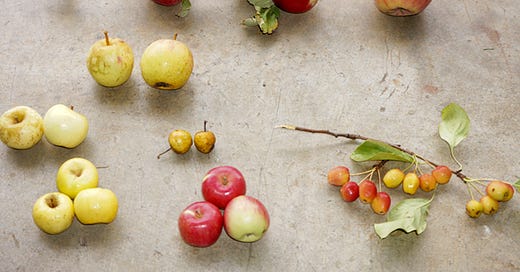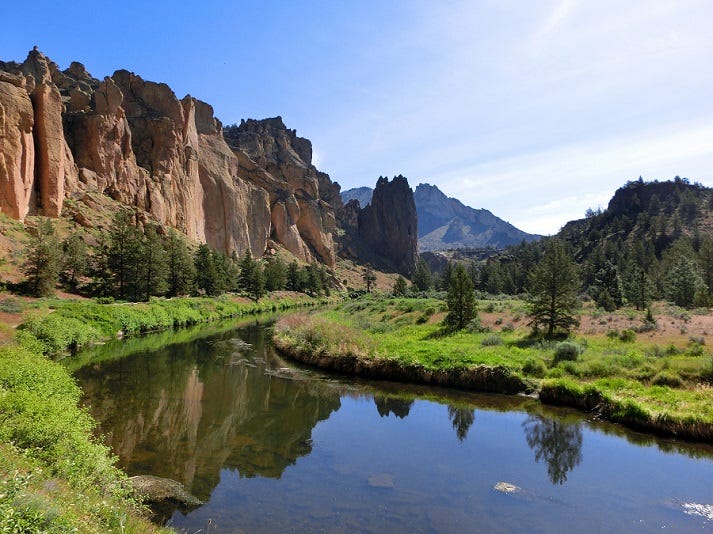The growing of crops and rearing of animals have formed a fundamental part of human food sources for millennia. Since the end of the last Ice Age c. 10,000 years ago, human civilisation has been rooted in agriculture. Whilst we evolved as hunter-gatherers, since the Neolithic Revolution, the vast majority of known cultures have grown crops or controlled animals for sustenance.
Agriculture led to the development of advanced cultures, kingdoms and empires, and arguably also created concepts of rich and poor, power differentials in society, and the complex social webs and polities that we live in today.
However, how did agriculture develop? What process could have led to humans moving from hunting and gathering to the tending of crops and the rearing of animals?
Spirituality
Humans have been spiritual for long before the Neolithic period. There is extensive evidence of modern humans using ceremonial items from c. 80,000 years ago. This coincides with the dawn of behavioural modernity, where it is said that homo sapiens first developed symbolic usage. The cause of this is unknown - though it’s possible there was a genetic mutation that facilitated our brains formulating of abstract concepts and realities. Before then, whilst anatomically modern humans existed from c. 200-300kya, there is little evidence of symbolic or abstract thinking. Since 80kya, we have seen an abundance of artefacts showing cultural, spiritual and possibly religious meanings.
We’ve also seen similar artefacts created by Neanderthals. Our view of them has changed over several decades, as we know believe due to mounting evidence that they were not the brutes we once labelled them as.
So as modern humans were hunter-gatherers with symbolic thought, they may well have cited natural phenomena, from rocks to rivers, lakes and oceans, or plants and animals, as sacred or holy. We can note this in contemporary hunter-gatherer populations, and thus it’s not a stretch to presume prehistoric humans would have been similar.
If they deemed given plants as sacred, they could have viewed plants bearing fruits or edible seeds as such, given their food output.
Let’s picture a tribe of hunter-gatherers, c. 10kya.
At this point, the Ice Age has ended, or at least the Earth’s climate is morphing from the extended cold state.
In certain parts of the world, sea levels were rising. General climate change would have led to different plants and animals emerging or declining, as well as new terrains being created. Tundra might turn into grasslands or forests. Arid plains may turn into deserts. Or barren glaciers might turn into rocky river valleys, which in time might sustain plants and animals.
If we take our hypothetical tribe, which lives in a large river valley with trees and animals, they may roam the valley foraging for food. This could include hunting wild boar or aurochs (the ancestors of modern pigs and cattle) and gathering proto-apples and proto-wheat, and even the ancestors of figs, oranges, and plums.
Apples and plums can be sweet, and perhaps the sweet taste has lent to a divine belief emergent in the tribe. They may view them as sacred, and thus take effort to ensure they are safe from predators or natural disasters. If we imagine their territory of roughly 30 sq. km, then there may be several apple or plum trees growing from where they can obtain fruit.
Perhaps they set up temporary camps near the trees, to gain ready access to their sacred fruits.
Over time, they note that certain conditions and weather better support their sacred fruit. Maybe additional trees grow from discarded seeds, near the original trees. Perhaps specific shamans or priests emerge, which are tasked with protecting the trees and providing the conditions for their growth.
As the community grows, it could be that each small camp has a dedicated apple or plum tree. If other communities or tribes are contacted, they may exchange the apples or plums for pomegranates or limes. These in turn might be added to their pantheon of sacred fruits, and over several generations defined and systematic cultivation techniques might have arisen.
Successful cultivation of their sacred plants has led to a larger population and the creation of more permanent settlements. Possibly, over centuries, a small kingdom has emerged, with specified classes, ranks, and laws. There may be an agricultural class that grows and harvests apples, plums, oranges and pomegranates, which in turn have changed from their ancestral forms due to trial and error and experimentation with observable yields.
The kingdom might also have expanded, or have been conquered in kind. Let’s imagine that at this point, it’s 4000 years after the primordial hunter-gatherers observed how the proto-apple trees grew. Their distant descendants, after millennia of experimentation, accident, and trial and error, have long abandoned hunting and gathering and embarked on a social complex enabling the establishment of intricate empires.
The people’s spirituality and religion might have changed too. It could be that apples and oranges now are seen as gifts to a new deity or deities, without being seen as sacred in themselves.
The coming of the Copper, Bronze and Iron Ages may have added new tools and techniques, further boosting crop yields and supporting an even larger population.
This is just a speculative piece on how agriculture could have emerged over time.
It is likely that the process took many centuries or millennia, and it was a result of much experimentation, trial and error and knowledge passed down through generations.





